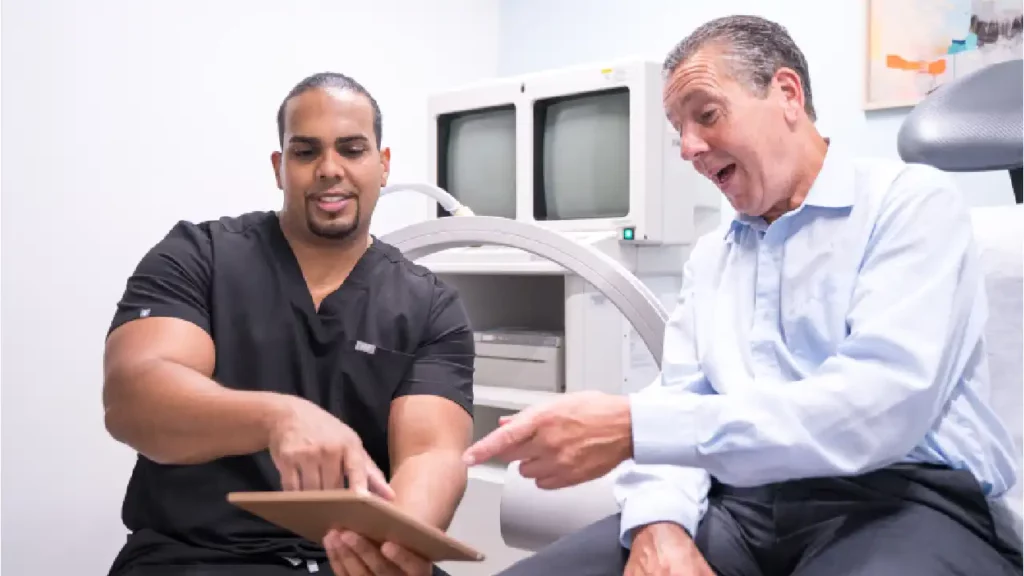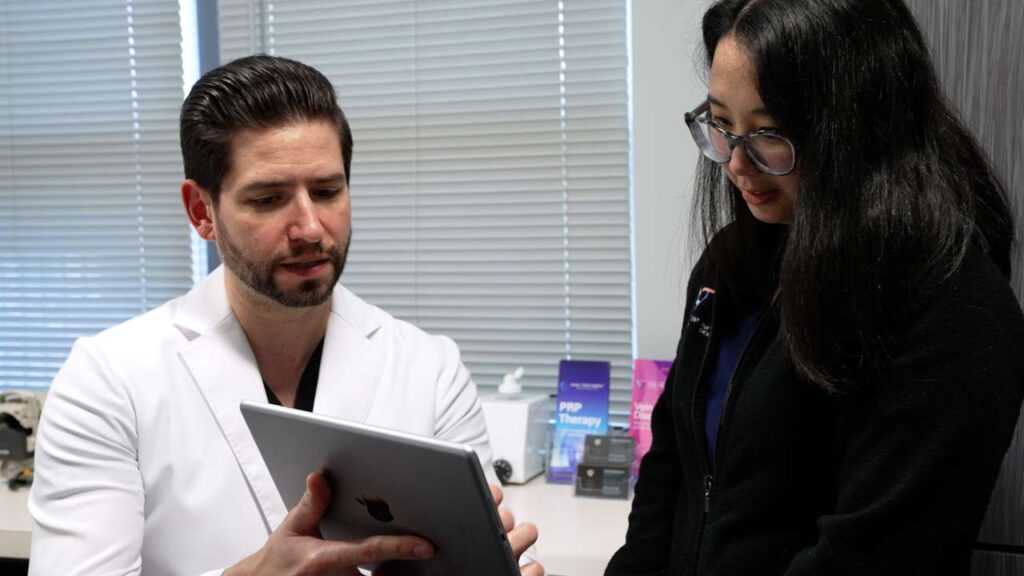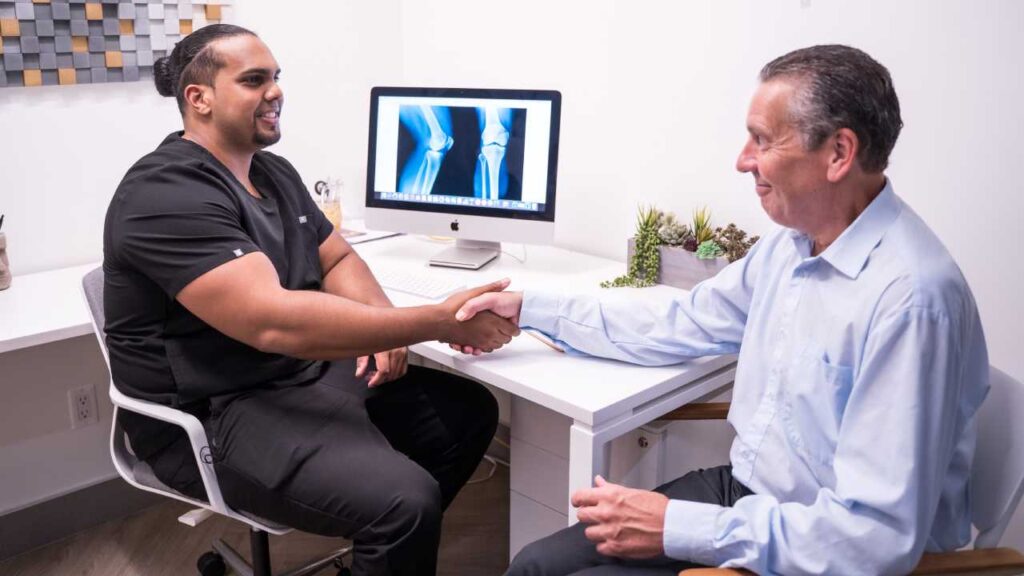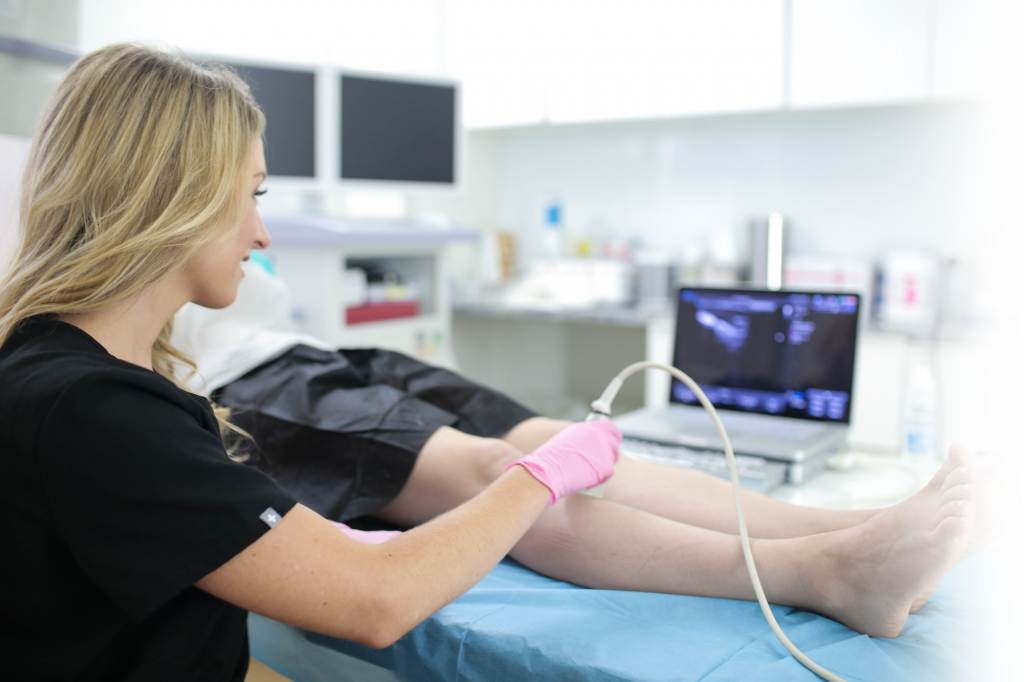What Is the Cost of Varicose Vein Stripping in NJ?
If you’re searching, “How much does it cost to get your veins stripped,” you likely have unsightly, symptomatic varicose veins. Varicose veins cramp your style. They’re large, protuberant, twisted veins that are boldly hued in shades like purple, blue, and green. But they also cramp your actual body. The defective blood vessels cause heaviness, aching, cramping, and restlessness in the legs, along with unsightly dermatological symptoms
The cost of varicose vein stripping varies, depending on the extent of damage and related symptoms. Non-surgical tactics are not only more affordable, they’re also more appropriate for most patients. Book an appointment for minimally invasive vein treatment in New Jersey to avoid these costs related to vein stripping surgery.
Vein Stripping Costs to Consider:
- Pre-surgical MRIs, ultrasounds, or bloodwork
- General anesthesia
- Doctor’s fees
- Hospital fees
- Prescription pain medicine after the procedure
- Compression stockings
- Wound care supplies
- Lost income during recovery
- Antibiotics if infection occurs
- Follow-up appointments
- Assistance while you recover
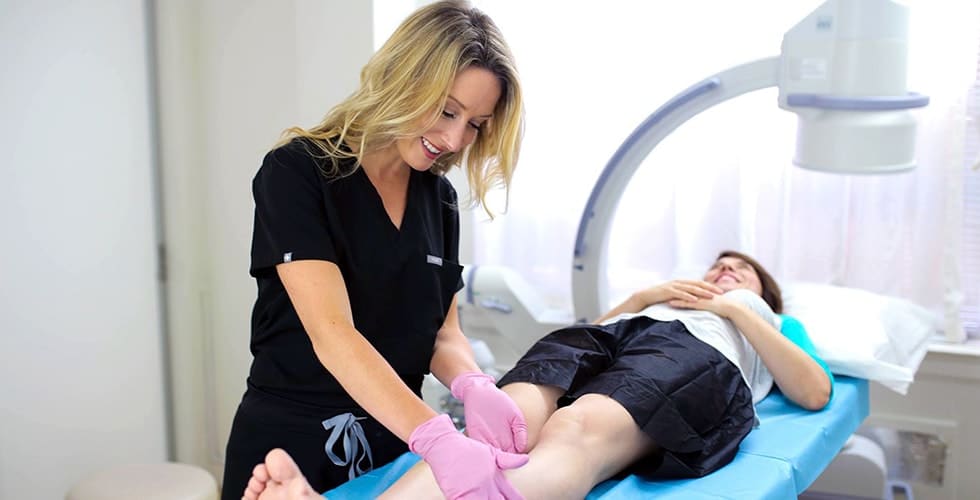
Is Vein Stripping the Only Way to Remove Varicose Veins?
Vein stripping is a surgery in which doctors make several incisions to remove varicose veins from the body. There are many ways to treat varicose veins without stripping them out of the body. Minimally invasive doctors use tiny needles to access the vein’s walls through the skin. They close the vein off, prompting it to disappear, without extracting it surgically. These procedures are more affordable than vein stripping surgery. Read on to learn how they save money.
Is Ambulatory Phlebectomy the Same Price as Vein Stripping?
There’s a newer surgical method called ambulatory phlebectomy that’s less invasive than traditional vein stripping. Rather than large incisions, doctors access the vein through puncture points, and then strip it from the body. For some patients, this is more affordable since it doesn’t usually require general anesthesia or hospitalization. For other patients, it’s more expensive since it’s a newer surgery that might not be covered by their insurance plan.
Is There a More Affordable Varicose Vein Treatment?
Fortunately, there are several varicose vein treatment options that are more affordable than both traditional vein stripping and ambulatory phlebectomy. Our Harvard-trained vein specialists in New Jersey use less invasive techniques that eliminate general anesthesia and hospitalization altogether. Many of them don’t even require local anesthesia.
These procedures are performed in-office and don’t require wound care, downtime, or prescription pain medicine. You won’t need to schedule anyone to assist you afterward or take time off work. You can drive yourself back to work! Here are affordable varicose vein treatments to consider.
Affordable Varicose Vein Treatments:
- Sclerotherapy (Asclera)
- Radiofrequency Ablation (VNUS Closure)
- Endovenous Laser Therapy (VenaCure)
- Mechanochemical Ablation (ClariVein)
- Vein Adhesives (VenaSeal)
Does Laser Treatment Cost Less Than Vein Stripping?
Laser treatments are one of the more affordable ways to treat varicose veins. But make sure your doctor is performing an endovenous procedure (EVLA or EVLT) like VenaCure, not a surface laser treatment with pulsed-dye lasers like VBeam. Surface lasers occasionally work for facial spider veins and small leg veins. But varicose veins usually stem from valve failure deeper in the vein, which must be addressed to prevent the continual formation of varicose veins.
Choose a board certified vein doctor for endovenous laser therapy, not a dermatologist for cosmetic laser treatment. If you choose the surface laser treatment, it won’t save you any money, since it won’t work, and you’ll have to treat your varicose veins again. Our premier vein center in New Jersey offers endovenous laser treatment, as well as a more comfortable thermal treatment that uses radiofrequency instead of lasers.
Do All Vein Treatments Charge for General Anesthesia?
Surgical vein stripping routinely employs either spinal or general anesthesia. But newer, less invasive vein treatments don’t use general anesthesia. This reduces the cost of the procedure, as well as the risk. Sclerotherapy, RFA, EVLT, ClariVein, and VenaSeal are all performed without general anesthesia. EVLT and RFA use an injectable local anesthetic to protect the area near the vein from heat. The other procedures don’t even require that.
Are There Any Vein Treatments Insurance Plans Will Cover?
There are several varicose vein treatments that insurance plans will cover, depending on the policy. The procedures with the longest track record and the ones considered medically necessary are most likely to be covered. These include sclerotherapy, radiofrequency ablation, and endovenous laser therapy. But many patients are covered for vein adhesives and mechanochemical ablation as well. Vein stripping surgery might be covered by insurance, but as discussed, it still involves additional expenses.
Our insurance team works hard to achieve full coverage for your procedure. We file paperwork on your behalf and explain the cost before your treatment, so you know exactly what to expect. Varicose veins and vein disease are rampant, recognized medical conditions, so most of our patients receive full coverage for their procedure.
Is the Doctor’s Fee Higher at Certain Vein Centers?
Some vein centers are run by vein doctors, while others are run by dermatologists, estheticians, or doctors who specialized in other fields. The doctor’s fee will be higher when you choose an elective or cosmetic procedure since these aren’t covered by insurance. Choose a board certified vein specialist at an accredited vein center to increase the likelihood of insurance covering your procedure.
What’s the Most Affordable Method of Varicose Vein Removal?
Vein stripping always costs more than non-surgical methods, due to the additional expenses of general anesthesia, hospitalization, and downtime from work. But the most affordable minimally invasive method of varicose vein removal depends on the individual. Some veins are better suited to sclerosants, while others require thermal treatments or adhesives. The most affordable route is the one that will work the first time.
Our vein doctors study your medical history, symptoms, and venous anatomy to create a customized plan. If the approach is too superficial, it won’t correct the source of the problem. But if the approach is too invasive, it will cause unnecessary expenses. Our award-winning team does exactly what’s needed to seal off damaged veins and their impetus, without invasive surgery.
Can I Just Wear Compression Stockings and Save My Money?
Can you just pull on some compression stockings and skip treatment costs altogether? Possibly, but it’s not likely. Compression stockings reduce symptoms like swelling and cramping in some patients, but not all of them. In fact, patients with certain medical conditions are advised to avoid compression stockings.
Plus, symptom reduction is not enough for most patients. Underlying vein disease progresses and causes more spider veins and varicose veins over time, unless it’s treated. Advanced symptoms include venous ulcerations, venous stasis dermatitis, bleeding that’s hard to control, and permanent discoloration on the lower extremities.
Dealing with all of that could prove more costly than simply treating your veins at our affordable vein center in NJ. We offer a variety of minimally invasive varicose vein treatments that are covered by insurance. Each is completed in under 30 minutes, so you don’t even have to miss a day’s income. Stop by during your lunch break, and head back to work with healthy veins!
